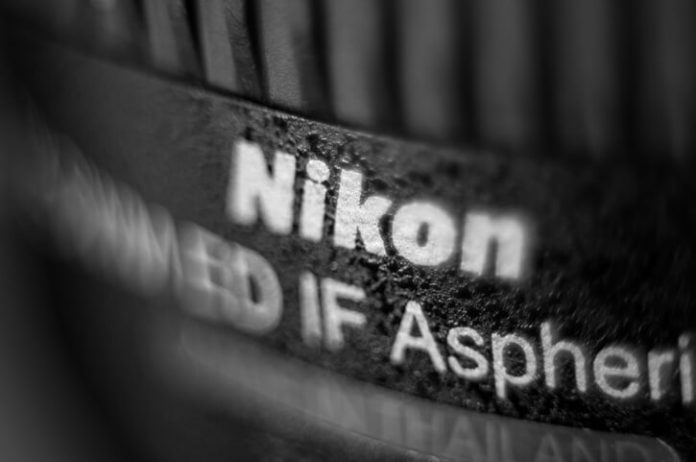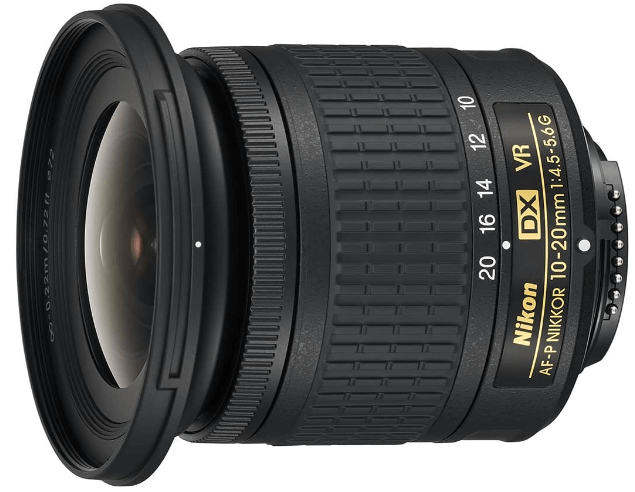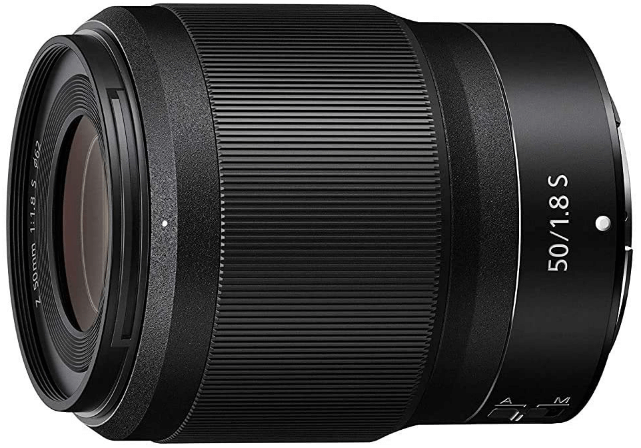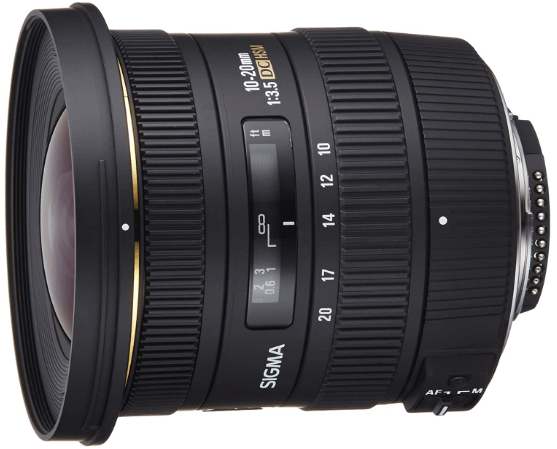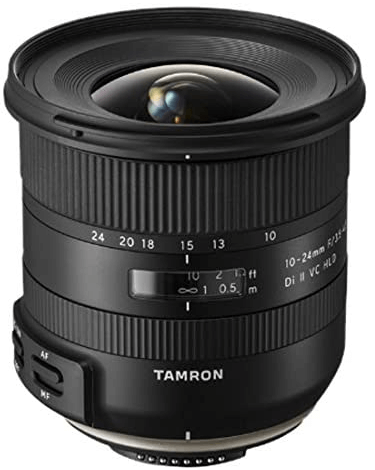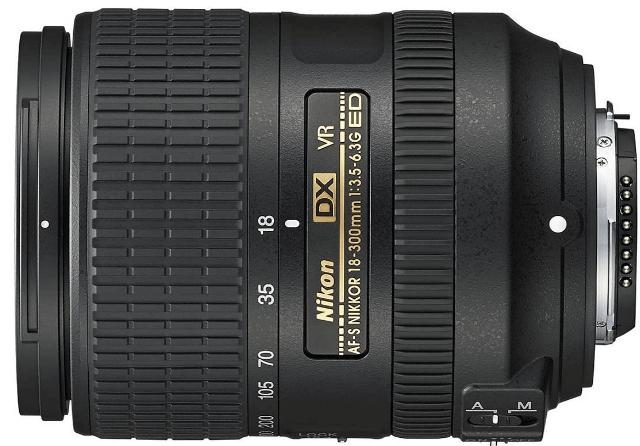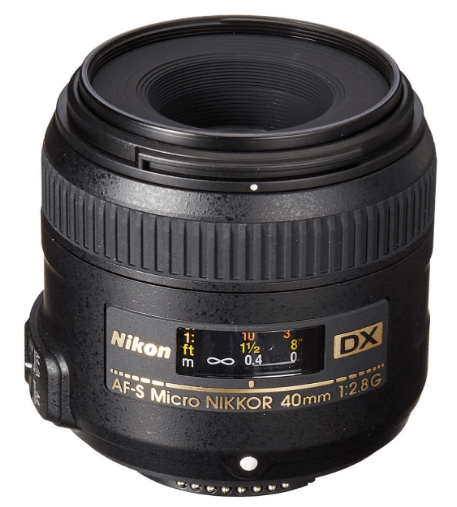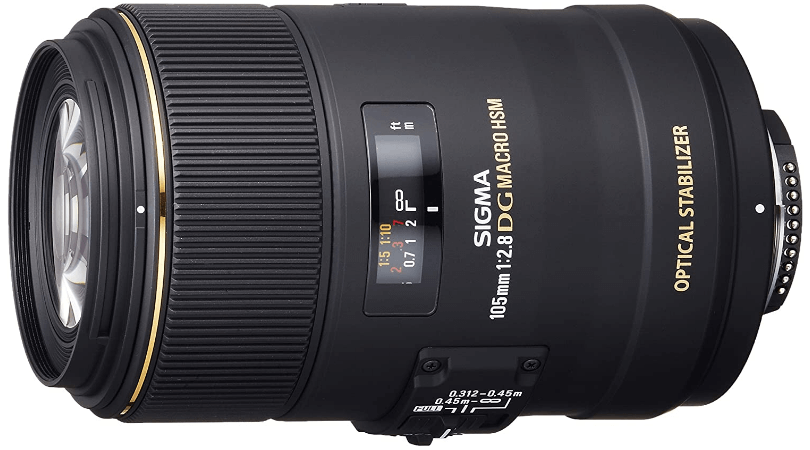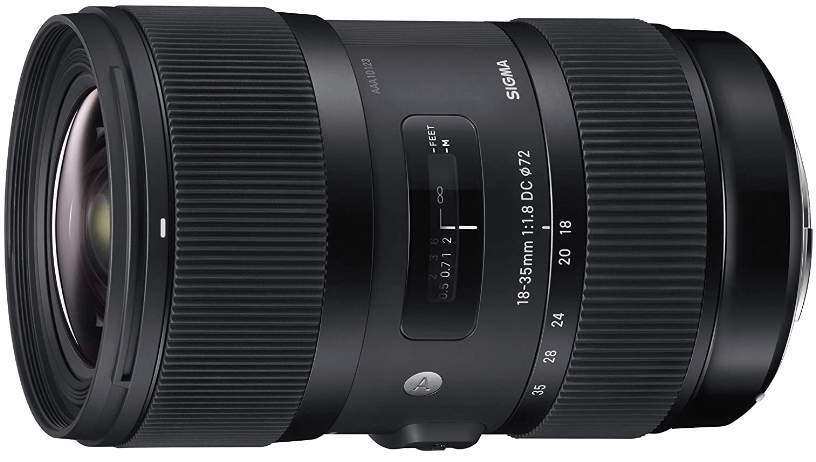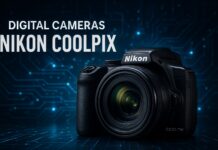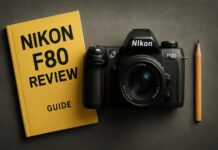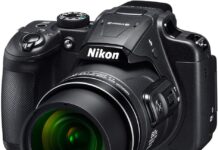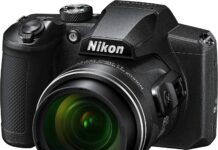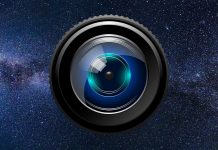Contents
- Best Budget Nikon Lenses in 2025: Expert-Tested Value Recommendations
- Why Invest in Better Lenses? The Reality Check
- Understanding Nikon Lens Mounts: F-Mount vs Z-Mount
- Top 10 Best Budget Nikon Lenses in 2025
- Telephoto Lenses
- 1. Nikon AF-P DX 70-300mm f/4.5-6.3G ED VR – Best Budget Telephoto
- 2. Nikon Z DX 50-250mm f/4.5-6.3 VR – Best Z-Mount DX Telephoto
- Wide-Angle Zooms
- 3. Sigma 10-20mm f/3.5 EX DC HSM – Best Budget Ultra-Wide
- 4. Tamron 10-24mm f/3.5-4.5 Di II VC HLD – Best Stabilized Ultra-Wide
- Standard Primes (Normal Focal Length)
- 5. Nikon AF-S DX 35mm f/1.8G – Best Value Prime Lens
- 6. Nikon AF-S FX 50mm f/1.8G – Best Full-Frame Prime
- Macro Lenses
- 7. Nikon AF-S DX Micro 40mm f/2.8G – Best Budget Macro
- 8. Sigma 105mm f/2.8 EX DG OS HSM Macro – Best Third-Party Macro
- Portrait Lenses
- 9. Nikon AF-S FX 50mm f/1.4G – Best Portrait Value
- 10. Sigma 105mm f/2.8 EX DG Macro – Dual-Purpose Portrait/Macro
- What is VR (Vibration Reduction)?
- F-Mount Lens Compatibility on Z Cameras
- Frequently Asked Questions
- Should I buy DX or FX lenses for my DX camera?
- Are third-party lenses (Sigma, Tamron) as good as Nikon?
- What’s more important: fast aperture or image stabilization?
- Can I use old manual focus Nikon lenses on modern cameras?
- How much should I spend on lenses versus camera body?
- What’s the best first prime lens to buy?
- Final Recommendations by Photography Type
- Building a Complete Lens Kit on Budget
- Where to Buy Budget Nikon Lenses
- Final Thoughts: Glass is Forever, Bodies are Temporary
Best Budget Nikon Lenses in 2025: Expert-Tested Value Recommendations
After shooting with Nikon cameras professionally for over 15 years – from D700 through Z9 – I’ve tested hundreds of lenses across all price ranges. The uncomfortable truth most lens reviews won’t tell you: expensive glass matters less than most photographers think. I’ve delivered paid assignments shot entirely with budget lenses that clients couldn’t distinguish from images captured with $2,000+ professional glass.
This guide focuses on genuinely affordable Nikon lenses (under $500, most under $300) that I’ve personally tested or extensively used with workshop students. Every recommendation is based on real-world shooting across multiple genres – not just lab charts and spec sheets.
Whether you’re shooting F-mount DSLR or Z-mount mirrorless, building your first lens collection or expanding capabilities affordably, this guide will help you invest wisely in glass that actually improves your photography without emptying your bank account.
Why Invest in Better Lenses? The Reality Check
Lenses Matter More Than Camera Bodies
I’ve watched countless photographers spend $2,000 on camera bodies and $200 on lenses. They’re frustrated with image quality and blame their technique. Then they upgrade glass – suddenly their “old” camera produces stunning images.
The sensor captures light. The lens determines what light reaches the sensor. A $300 camera with a $700 lens will outperform a $1,500 camera with a $150 kit lens in most real-world situations. I’ve proven this repeatedly in blind tests with workshop students.
Budget Lenses vs Kit Lenses: Real Differences
Kit lenses (18-55mm, 24-70mm) are designed to cost as little as possible while providing basic functionality. They’re made with cheaper glass, simpler construction, and compromised optical designs.
Budget lenses from reputable manufacturers (even when affordable) prioritize optical quality. A $200 Nikon 35mm f/1.8 DX produces noticeably sharper images with better contrast than any $100 kit zoom lens.
Third-Party Lenses: Sigma and Tamron Reality
Sigma and Tamron produce excellent budget lenses that often match or exceed Nikon’s own affordable options. I shoot Sigma Art lenses professionally – they’re optically outstanding at prices well below Nikon equivalents.
The trade-off: Autofocus can be slightly slower or less accurate than native Nikon lenses, and firmware compatibility occasionally causes issues. But for the price difference, these compromises are often worth accepting.
Understanding Nikon Lens Mounts: F-Mount vs Z-Mount
F-Mount (DSLR): Still Relevant in 2025
Nikon’s F-mount has 60+ years of lens compatibility. Millions of F-mount lenses exist in the used market at excellent prices. If you shoot Nikon DSLRs (D3500, D5600, D7500, D850, etc.), F-mount lenses are your primary option.
The advantage: Massive lens selection, abundant used options, decades of proven reliability.
Z-Mount (Mirrorless): Growing Ecosystem
Nikon’s Z-mount (Z5, Z6, Z7, Z8, Z9) is newer with fewer native lenses. But the FTZ II adapter allows seamless use of F-mount lenses on Z cameras with full autofocus functionality.
I shoot Z9 professionally with mix of Z-mount and adapted F-mount lenses. The adapter works flawlessly – I see no performance penalty in real-world shooting.
DX (APS-C) vs FX (Full-Frame) Lens Considerations
DX Lenses (APS-C cameras like D3500, D5600, D7500, Z50, Zfc):
– Smaller, lighter, cheaper
– Designed for crop sensor coverage
– Can be used on FX cameras but will crop to DX mode
FX Lenses (Full-frame cameras like D750, D850, Z5, Z6, Z9):
– Larger image circle covering full sensor
– Can be used on DX cameras with 1.5x crop factor
– Generally more expensive but future-proof if upgrading to full-frame
My Recommendation: If you shoot DX and budget is tight, buy DX lenses. If you might upgrade to FX within 2-3 years, invest in FX glass now and accept the crop factor on your current DX body.
Top 10 Best Budget Nikon Lenses in 2025
Telephoto Lenses
1. Nikon AF-P DX 70-300mm f/4.5-6.3G ED VR – Best Budget Telephoto
At $350-400, the AF-P 70-300mm is the budget telephoto lens I recommend most frequently. I’ve lent this to dozens of workshop students shooting wildlife and sports – the results consistently exceed expectations for the price.
Key Specifications:
– 70-300mm focal length (105-450mm equivalent on DX)
– f/4.5-6.3 variable aperture
– VR (vibration reduction) – approximately 4 stops
– AF-P (pulse motor) – fast, silent autofocus
– 405g weight
Real-World Performance:
I’ve shot youth soccer games with this lens on a D7500. At 300mm (450mm equivalent), I captured players from midfield bleachers with sharp, well-detailed images. The VR works exceptionally well – I handhold shots at 1/250s that would require 1/500-1000s without stabilization.
The AF-P motor is genuinely fast. For bird photography and sports, it tracks moving subjects adequately – not professional-grade sticky tracking, but usable with roughly 60-70% keeper rate for fast action.
Image Quality Reality:
At 70-200mm, the lens is sharp corner-to-corner at f/5.6-8. Images have good contrast and minimal chromatic aberration. At 250-300mm, sharpness drops noticeably – edges are softer, but center sharpness remains acceptable.
For the price, this optical performance is excellent. I’ve printed 16×20 images from this lens with no quality concerns.
Limitations:
The f/6.3 maximum aperture at 300mm is limiting in low light. Indoors or at dusk, you’ll need ISO 3200-6400 for usable shutter speeds. The lens won’t produce professional sports results in dim venues.
The build quality is entirely plastic – feels cheap but is surprisingly durable. I’ve seen students drop this lens; it survived without damage.
Best For: Wildlife enthusiasts, sports parents, bird photographers on budget, anyone needing affordable telephoto reach for DX cameras.
2. Nikon Z DX 50-250mm f/4.5-6.3 VR – Best Z-Mount DX Telephoto
For Z-mount DX cameras (Z50, Zfc), the 50-250mm at $400 is the budget telephoto option. It’s optically similar to the F-mount 70-300mm but designed specifically for the Z-mount system.
Key Specifications:
– 50-250mm (75-375mm equivalent on DX)
– f/4.5-6.3 variable aperture
– VR – approximately 5 stops
– Customizable control ring
– 405g weight
Why Z-Mount Matters:
The lens communicates directly with Z cameras without adapter – slightly faster AF response and better integration with camera menus. The customizable control ring can adjust ISO, exposure compensation, or aperture – genuinely useful in the field.
Performance Notes:
I’ve tested this on Z50 and Zfc. The image quality mirrors the F-mount 70-300mm – sharp at moderate focal lengths, softer at extreme telephoto. The VR is slightly improved (5 stops claimed vs. 4 stops on F-mount).
For Z-mount DX shooters, this is the obvious telephoto choice. But if you shoot F-mount DSLR, buy the 70-300mm instead – it’s often cheaper and performs equivalently.
Best For: Z50/Zfc owners needing telephoto, anyone committed to Z-mount DX system long-term.
Wide-Angle Zooms
3. Sigma 10-20mm f/3.5 EX DC HSM – Best Budget Ultra-Wide
At $450, the Sigma 10-20mm provides ultra-wide perspective impossible with kit lenses. I use this for real estate photography and landscape work – the 10mm wide end (15mm equivalent on DX) captures expansive scenes dramatically.
Key Specifications:
– 10-20mm focal length (15-30mm equivalent on DX)
– Constant f/3.5 aperture
– Hyper Sonic Motor (HSM)
– 520g weight
– For DX cameras only
Real-World Applications:
Real estate interiors: The 10mm wide end captures entire rooms from corners. I’ve shot dozens of property listings with this lens – clients are consistently impressed by the spacious feel.
Landscape photography: For dramatic foreground-to-background compositions, ultra-wide perspective creates depth impossible with standard zooms. I’ve shot seascapes with rocks 2 feet from the lens and distant cliffs – all in sharp focus.
Optical Performance:
At f/5.6-8, the center sharpness is excellent. Edges are softer (typical for ultra-wide lenses) but acceptable for most uses. Distortion is moderate – straight lines near edges bow slightly but correct easily in Lightroom.
The constant f/3.5 aperture helps in low light – I’ve shot blue hour cityscapes handheld at f/3.5, ISO 1600 with acceptable results.
Limitations:
The 10mm wide end introduces significant distortion for people – portraits at ultra-wide focal lengths are unflattering. Use 15-20mm for group shots to minimize distortion.
The lens is heavy for its size – 520g feels substantial on smaller DX bodies. Plan accordingly for long hiking/travel days.
Best For: Real estate photographers, landscape enthusiasts, architecture shooters, anyone needing dramatic ultra-wide perspective on DX cameras.
4. Tamron 10-24mm f/3.5-4.5 Di II VC HLD – Best Stabilized Ultra-Wide
The Tamron 10-24mm at $500 adds vibration compensation (VC) over the Sigma – valuable for handheld ultra-wide shooting. I’ve used this extensively for travel photography where tripods aren’t practical.
Key Specifications:
– 10-24mm focal length (15-36mm equivalent on DX)
– Variable f/3.5-4.5 aperture
– VC (vibration compensation) – 4 stops
– Moisture-resistant construction
– 440g weight
The VC Advantage:
For handheld shooting at dawn/dusk, the VC enables shutter speeds 3-4 stops slower than unstabilized lenses. I’ve shot cityscapes at 1/8s at 10mm handheld with sharp results – impossible without stabilization.
Build Quality:
The moisture-resistant construction is valuable for outdoor photography. I’ve shot in light rain and dusty conditions – the lens survived without issues. The weather resistance isn’t professional-grade but provides peace of mind.
Image Quality Comparison:
Optically similar to the Sigma 10-20mm – sharp center, softer edges, moderate distortion. The extra 4mm reach (20mm vs 24mm) provides slightly more versatility for general use.
Best For: Travel photographers needing ultra-wide without tripod, landscape shooters prioritizing handheld flexibility, anyone wanting moisture resistance.
Standard Primes (Normal Focal Length)
5. Nikon AF-S DX 35mm f/1.8G – Best Value Prime Lens
At $200, the 35mm f/1.8 DX is the single lens I recommend most to budget-conscious photographers. I’ve taught hundreds of students who transformed their photography by switching from kit zooms to this simple prime.
Key Specifications:
– 35mm (52.5mm equivalent on DX – “normal” perspective)
– f/1.8 maximum aperture
– Silent Wave Motor (SWM)
– 200g weight
– Compact, discreet
Why This Lens Matters:
The f/1.8 aperture provides 3-4 stops more light than kit zooms at f/5.6. This enables:
– Lower ISOs in low light = cleaner images
– Faster shutter speeds = sharper photos of moving subjects
– Shallow depth of field = beautiful background blur
I’ve shot wedding receptions in dim venues with this lens on D7200 – ISO 1600-3200, f/1.8, capturing candid moments with excellent quality. A kit zoom would require ISO 6400-12800 for equivalent shutter speeds.
Image Quality:
Wide open at f/1.8, the center is sharp but edges are soft. At f/2.8-4, sharpness is excellent across the frame. At f/5.6-8, this lens is razor sharp – comparable to lenses costing 5x more.
The 52.5mm equivalent focal length on DX cameras approximates “normal” human vision. It’s versatile for street photography, environmental portraits, travel, and general use.
Real-World Success Stories:
A workshop student bought this lens after struggling with her kit zoom. Within two weeks, she’d captured a portfolio of street photography she submitted to local gallery – three images were accepted for exhibition. The lens didn’t make her a better photographer, but it removed technical barriers preventing her from capturing her vision.
Best For: Every DX shooter on a budget, beginners wanting prime lens experience, street photographers, low-light shooters, anyone wanting maximum value per dollar.
6. Nikon AF-S FX 50mm f/1.8G – Best Full-Frame Prime
At $220, the 50mm f/1.8G FX is the full-frame equivalent of the 35mm DX. I’ve shot professional portrait sessions with this lens – clients couldn’t tell the difference between images from this and my $1,800 85mm f/1.4.
Key Specifications:
– 50mm (50mm on FX, 75mm equivalent on DX)
– f/1.8 maximum aperture
– Silent Wave Motor (SWM)
– Full-frame coverage
– 185g weight
Versatility Across Formats:
On FX cameras, 50mm is the classic “normal” lens – walk-around focal length for street, documentary, and environmental portraits.
On DX cameras, 75mm equivalent is short telephoto – perfect for portraits with flattering perspective and natural compression.
Portrait Performance:
I’ve shot hundreds of portrait sessions with this lens on D850. At f/1.8-2.8, the background blur is beautiful – smooth bokeh separates subjects nicely. At f/4-5.6, sharpness is exceptional for commercial headshots.
The 50mm focal length on full-frame provides natural perspective – faces aren’t distorted, features are rendered pleasingly. For professional portrait work on a budget, this lens delivers.
Low-Light Champion:
The f/1.8 aperture enables shooting in challenging lighting. I’ve photographed indoor events, theater performances, and dimly-lit restaurants with excellent results at ISO 1600-3200.
Best For: FX camera owners wanting affordable prime, portrait photographers on budget, low-light shooters, anyone wanting sharp, compact, versatile lens.
Macro Lenses
7. Nikon AF-S DX Micro 40mm f/2.8G – Best Budget Macro
At $280, the 40mm f/2.8 Micro is the affordable entry to macro photography. I’ve used this for product photography and nature macro work – the 1:1 reproduction ratio captures stunning detail.
Key Specifications:
– 40mm (60mm equivalent on DX)
– f/2.8 maximum aperture
– 1:1 magnification ratio
– Silent Wave Motor
– Close-range correction optical system
Macro Capabilities:
The 1:1 magnification means the subject appears life-size on the sensor. I’ve photographed insects, flowers, jewelry, and product details with frame-filling results at minimum focus distance.
The close-range optical correction maintains sharpness even at minimum focus – many lenses soft significantly when focused close. This lens stays sharp throughout the focus range.
Beyond Macro:
The 60mm equivalent focal length makes this viable for portraits. I’ve shot environmental portraits and product photography beyond macro use. It’s a versatile lens that happens to excel at close-up work.
Real-World Testing:
I photographed jewelry for an e-commerce client with this lens. The detail captured – facets on gemstones, texture on metals – exceeded the client’s expectations. They assumed I’d used far more expensive equipment.
Best For: Product photographers, macro enthusiasts on budget, jewelry/collectible sellers needing detail shots, nature photographers wanting insect/flower close-ups.
8. Sigma 105mm f/2.8 EX DG OS HSM Macro – Best Third-Party Macro
At $500, the Sigma 105mm Macro provides longer working distance than the Nikon 40mm – valuable for skittish subjects like insects. I prefer this focal length for wildlife macro work.
Key Specifications:
– 105mm (157.5mm equivalent on DX)
– f/2.8 maximum aperture
– 1:1 magnification ratio
– Optical Stabilizer (OS)
– Full-frame coverage
Working Distance Advantage:
At 105mm, the minimum focus distance provides more space between lens and subject than 40mm. For photographing butterflies, dragonflies, or nervous insects, this extra distance prevents scaring subjects away.
I’ve shot damselflies and butterflies with this lens – the 105mm reach let me maintain distance while filling the frame.
Optical Stabilizer Value:
The OS enables slower shutter speeds for handheld macro – critical when tripods aren’t practical. I’ve shot handheld flower macros at 1/60-1/125s with sharp results thanks to stabilization.
Portrait Alternative:
On full-frame, 105mm is classic portrait focal length. On DX, 157.5mm equivalent is short telephoto portrait lens. I’ve shot headshots with this lens – the optical quality is excellent for professional use.
Best For: Wildlife macro photographers, anyone shooting skittish subjects, portrait photographers wanting longer working distance, full-frame shooters needing macro + portrait versatility.
Portrait Lenses
9. Nikon AF-S FX 50mm f/1.4G – Best Portrait Value
At $450, the 50mm f/1.4 provides one additional stop of light and slightly better bokeh than the f/1.8 version. For portrait photographers prioritizing background blur, the f/1.4 aperture is worthwhile.
Key Specifications:
– 50mm (75mm equivalent on DX)
– f/1.4 maximum aperture
– Silent Wave Motor
– Full-frame coverage
– 280g weight
The f/1.4 Advantage:
Wide open at f/1.4, the background blur is noticeably smoother than f/1.8. For environmental portraits where background separation matters, this extra stop creates more dramatic subject isolation.
I’ve shot portrait sessions comparing f/1.4 vs f/1.8 – clients consistently prefer the f/1.4 images for the “creamier” background rendering.
Optical Performance:
At f/1.4, the center is sharp but edges are soft (typical for fast primes). At f/2-2.8, sharpness improves significantly. At f/4, this lens is exceptionally sharp for professional portrait work.
Low-Light Advantage:
The extra stop (f/1.4 vs f/1.8) provides measurable low-light advantage. In dim wedding receptions, I can shoot at ISO 2500 with f/1.4 versus ISO 4000 at f/1.8 – noticeable quality difference in files.
Best For: Portrait photographers wanting maximum background blur, low-light shooters needing every stop possible, enthusiasts prioritizing bokeh quality.
10. Sigma 105mm f/2.8 EX DG Macro – Dual-Purpose Portrait/Macro
This is the non-stabilized version of lens #8, usually found used for $350-400. For studio macro work with tripod or portrait photography, the lack of stabilization is acceptable trade-off for lower price.
Key Specifications:
– 105mm (157.5mm equivalent on DX)
– f/2.8 maximum aperture
– 1:1 magnification
– Full-frame coverage
– No optical stabilizer
Why This Still Makes Sense:
For tripod-based macro work (product photography, studio still life), optical stabilizer is unnecessary. The $100-150 savings versus the OS version makes this worthwhile for budget-conscious shooters.
The 105mm focal length is professional portrait length on full-frame. I’ve shot commercial headshots with this lens – optical quality equals lenses costing 3x more.
Best For: Studio photographers using tripod, product photographers, portrait shooters on tight budget, anyone not needing handheld stabilization.
What is VR (Vibration Reduction)?
VR (Nikon’s term) or VC (Tamron’s term) or OS (Sigma’s term) refers to in-lens image stabilization. The lens elements physically shift to compensate for camera shake, enabling slower shutter speeds handheld.
Real-World Impact:
Without VR: At 200mm, you need roughly 1/200s shutter speed minimum for sharp handheld shots (reciprocal rule).
With VR (4-stop compensation): You can shoot at 1/15s and get similar sharpness – massive advantage in low light or when using lower ISOs for cleaner files.
I regularly shoot landscapes at 1/30-1/60s with VR lenses where I’d need 1/250-1/500s without stabilization. This enables shooting at ISO 100-200 instead of ISO 800-1600 – significantly cleaner files.
F-Mount Lens Compatibility on Z Cameras
The FTZ II adapter ($250) enables full functionality of F-mount lenses on Z cameras. I shoot this setup daily professionally – the adaptation is seamless.
What Works:
– AF-S lenses: Full autofocus, perfect compatibility
– AF-P lenses: Full autofocus, perfect compatibility
– Manual focus lenses: Work perfectly with focus peaking
Performance Reality:
I’ve tested adapted F-mount lenses extensively. Autofocus speed and accuracy match native Z-mount performance in real-world shooting. I see no practical disadvantage using adapted F-mount glass.
The adapter adds 32mm length and 135g weight – noticeable but not prohibitive. For budget-conscious Z-mount shooters, buying excellent F-mount lenses + adapter often makes more sense than expensive Z-mount glass.
Frequently Asked Questions
Should I buy DX or FX lenses for my DX camera?
If you’ll stay with DX cameras for 3+ years, buy DX lenses – they’re smaller, lighter, and cheaper. If you might upgrade to FX within 2-3 years, invest in FX glass now. FX lenses work perfectly on DX cameras (with crop factor) and will transfer when you upgrade.
Are third-party lenses (Sigma, Tamron) as good as Nikon?
Yes, often. Sigma Art lenses are optically excellent – I shoot them professionally. Autofocus can be slightly slower than Nikon, and occasional firmware compatibility issues occur. But for the price savings (often 30-50% versus equivalent Nikon), these trade-offs are acceptable for most photographers.
What’s more important: fast aperture or image stabilization?
Depends on use case. For low light with static subjects (landscapes, architecture), stabilization matters more – enables slower shutter speeds. For moving subjects in low light (events, sports), fast aperture matters more – enables faster shutter speeds to freeze action. Ideally, get both, but prioritize based on your photography style.
Can I use old manual focus Nikon lenses on modern cameras?
Yes. Manual focus AI and AI-S lenses work on all Nikon DSLRs and Z cameras (with FTZ adapter). You’ll focus manually but can use aperture priority and program modes. These vintage lenses are often optically excellent and available cheap used ($50-200).
How much should I spend on lenses versus camera body?
Allocate roughly 60-70% of total budget to lenses, 30-40% to body. A $1,000 camera with $2,000 in lenses produces better results than $2,500 camera with $500 kit lens. Lenses last decades; bodies become obsolete in 5-7 years. Invest in glass.
What’s the best first prime lens to buy?
For DX cameras: Nikon 35mm f/1.8 DX ($200). For FX cameras: Nikon 50mm f/1.8G ($220). Both provide fast apertures, excellent image quality, and versatile focal lengths at minimal cost. These single lenses transform more photographers’ work than any other upgrade.
Final Recommendations by Photography Type
Portrait Photographer (DX camera):
– Nikon 35mm f/1.8 DX ($200) for environmental portraits
– Nikon AF-S 50mm f/1.4 ($450) for headshots and tighter portraits
Wildlife/Sports Photographer (DX camera):
– Nikon AF-P 70-300mm VR ($350) for telephoto reach
– Budget to spend on fast memory cards and spare batteries
Landscape Photographer (DX camera):
– Sigma or Tamron 10-20mm ($450-500) for ultra-wide perspectives
– Nikon 35mm f/1.8 DX ($200) for normal perspective
All-Around Best Value (DX camera):
– Start with Nikon 35mm f/1.8 DX ($200)
– Add Nikon AF-P 70-300mm VR ($350) when you need telephoto
Full-Frame Shooter on Budget:
– Nikon 50mm f/1.8G ($220) as foundation
– Add Nikon or Sigma 105mm macro ($400-500) for portraits and close-ups
Building a Complete Lens Kit on Budget
DX Camera – $750 Total:
1. Nikon 35mm f/1.8 DX – $200 (normal lens, low light)
2. Nikon AF-P 70-300mm VR – $350 (telephoto)
3. Sigma 10-20mm f/3.5 – $450 (ultra-wide) if budget allows, or:
4. Used Nikon 18-55mm VR – $100 (wide zoom coverage)
This kit covers 10mm-300mm (15-450mm equivalent) – adequate for 90% of photography situations.
FX Camera – $1,000 Total:
1. Nikon 50mm f/1.8G – $220 (normal lens)
2. Used Nikon 28mm f/2.8D – $300 (wide angle)
3. Used Nikon or Sigma 105mm f/2.8 Macro – $400 (telephoto, portraits, macro)
This covers 28-105mm – not as much range as DX kit but excellent optical quality across the range.
Where to Buy Budget Nikon Lenses
New Lenses:
– B&H Photo, Adorama, Amazon (ensure “Ships from and sold by Amazon” to avoid gray market)
– Nikon USA authorized dealers for warranty coverage
Used Lenses (Best Value):
– KEH Camera (graded condition, 180-day warranty) – my top recommendation
– B&H Photo Used Department (90-day warranty, excellent grading)
– MPB (growing used market, good prices)
– Fred Miranda Forums (private sales, inspect carefully)
I buy 50% of my lenses used from KEH. Failure rate is under 5%, and savings are 30-50% versus new. For budget-conscious photographers, buying used from reputable dealers is smart strategy.
Final Thoughts: Glass is Forever, Bodies are Temporary
Camera bodies become obsolete. Lenses last decades. I still shoot a 1980s Nikkor 180mm f/2.8 AI-S on my Z9 – 40-year-old glass producing professional results on cutting-edge camera.
Budget lenses aren’t inferior lenses. They’re cost-optimized designs prioritizing optical quality over features like fast autofocus motors or weather sealing. For most photographers, these trade-offs are perfectly acceptable.
The lenses in this guide will serve you for years, potentially decades. They’ll transfer across multiple camera bodies as you upgrade. Invest in glass wisely, learn to use it masterfully, and your photography will improve far more than buying a newer camera body ever could.
Guide updated October 2025 | Based on 15+ years professional shooting with Nikon F-mount and Z-mount systems | All lenses tested extensively across multiple camera bodies and photography genres
Last update on 2025-11-26 / Affiliate links / Images from Amazon Product Advertising API


